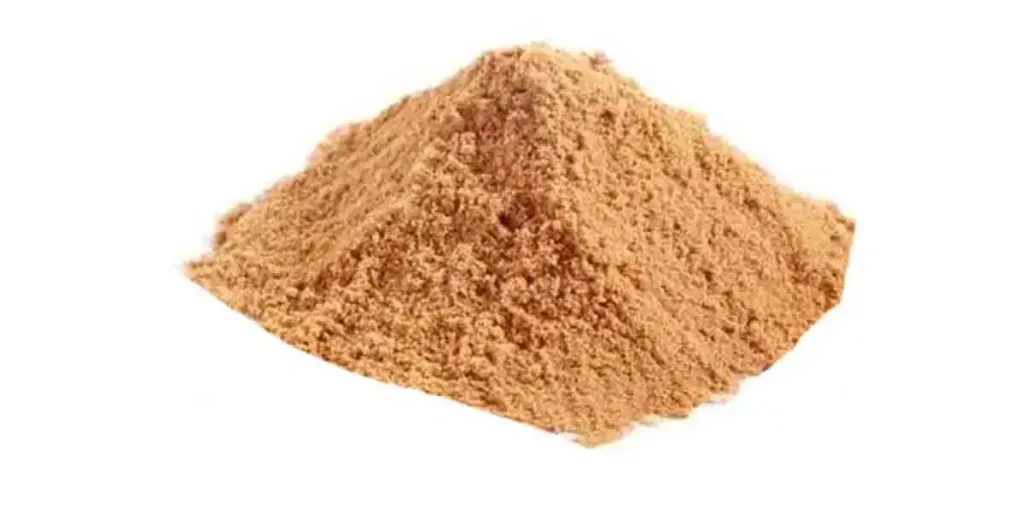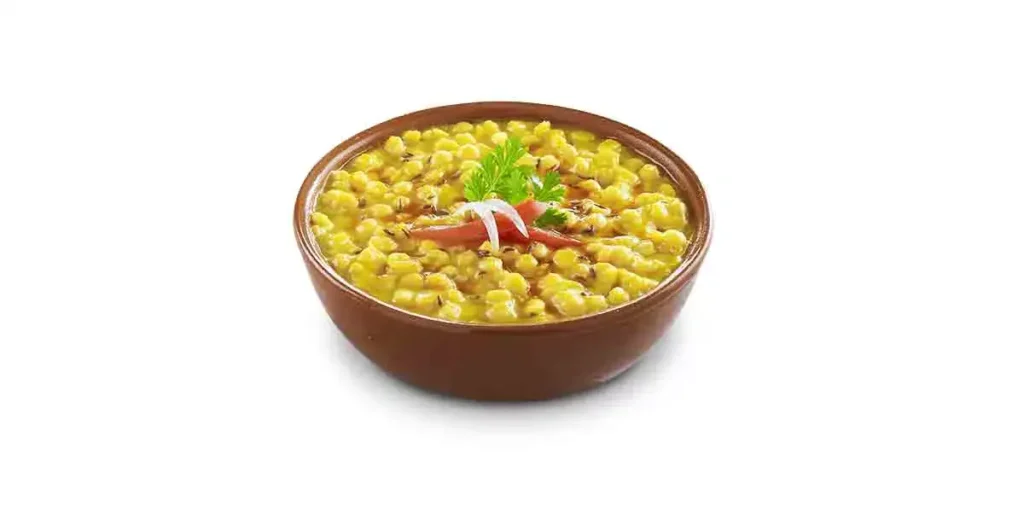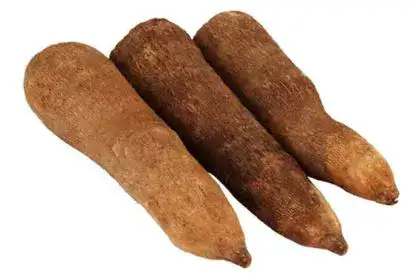Hing is also known as Asafoetida. It is also spelled as asafetida. Hing is the dried version of gum oleoresin or latex. It is exuded from the tap root or rhizome. The tap roots are of some species of perennial herbs like Ferula that can grow up to 3 to 5 feet or 1 to 1.5 meters tall.
These are part of Apiaceae, which comes under the carrot family. It is believed that the genus of both Asafoetida and Silphium is the same. Silphium is a plant of North America, and it was a cheap replacement for the classical antiquity of historically important herbs.

The trivial name of Asafoetida is stinking gum. And according to the name, it has a pungent smell. The smell did not have a bad effect on the food. But its use makes the dish more flavorful, and its smooth flavor is the same as leeks or onion relatives.
The hing in English is devil’s dung. There are also so many meanings of hing in different languages.
From the article below, you can get many answers to your questions about hing or Asafoetida. Like – hing in English, including its cost, health benefits of hing, nutritional values, recipes, types, popularity, availability, and many more.
| English name | Asafoetida or devil’s dung |
| Botanical name | Ferula asafoetida |
| Kingdom | Plantae |
| Family | Apiaceae |
| Genus | Ferula |
| Species | F. assa-foetida |
| Order | Apiales |
Hing in English name
The well-known English name of hing is Asafoetida or devil’s dung. It is a dried resin of a Ferula plant, and you can get it from the plant’s roots. You can get yellow powder when you grind or crush it into coarse.
It can be used for both medicinal and culinary purposes. Iran and Afghanistan are the natives of hing. It is mostly used in the cuisines of India.
You can use the powder Hing as a seasoning. Asafoetida is popular for its pungent and strong odor. The pungent smell comes from hing because it contains highly concentrated sulfur compounds.
According to Ayurvedic treatment, hing treats kidney and bronchitis stones and aid gas and digestion. Mid-aged people wear dried gum on their necks to avoid diseases and infections.
11+ Health benefits of hing
Although there is limited research on the topic of health benefits of hing. But here are some of them –
1. Hing is an excellent source of antioxidants
Hing is an amazing source of antioxidants. Free radicals are unstable molecules that are the main cause of potential damage to cells. The antioxidant present in Hing helps to protect the cells from getting damaged. Antioxidants also help to fight against cancer, heart disease, type-2 diabetes, and chronic inflammation.
Hing contains high amounts of flavonoids and tannin, which are phenolic compounds. The above two compounds are well known for their effects of potent antioxidants. Because of the small use of hing in cooking, it is difficult to assume the health benefits of the culinary use of Asafoetida or hing.
According to animal and test-tube studies, hing performs antioxidant and anti-inflammatory activities. But more research and studies are required to prove the potential health benefits of hing in human life.
2. Hing may provide some good digestion
sing Hing for good digestion is a very common and popular use of hing worldwide. According to a study of 30 days, 43 adults have critical indigestion issues. They fed two 250 mg capsules per day consisting of Asafoetida.
According to the report, they had significant improvement in digestion, bloating, and overall quality of life compared to a placebo group. You can only partially trust this result because it was recorded by the company related to the Asafoetida supplement.
Hing also helps to increase digestive enzyme activity. In this way, it boosts the digestion process. It is necessary to release the bile from the liver to maintain the need for fat digestion. Hing helps to release biles. If you use the spice hing frequently, you can get rid of the gas problem after eating.
3. Hing may help to decrease the IBS symptoms
The full form of IBS is irritable bowel syndrome. It is a chronic digestive issue that leads to abdominal discomfort and pain, gastric problem, and bloating, as well as diarrhea and constipation. Hing has a potential effect on digestion. So it helps to decrease IBS-associated symptoms.
According to two small experiments on adults who have IBS symptoms – they took Hing supplements for two weeks. The researchers saw a significant improvement in them after the course. But another study declines the result. So more studies are needed to prove that hing helps reduce IBS symptoms.
Garlic and onions have high amounts of fermentable carbs and fructans ( not digestible ). These two elements may lead to digestive stress in people suffering from IBS., so people with IBS can replace garlic and onion with hing a substitute.
4. Hing can avoid respiratory troubles
Hing has antimicrobial, expectorant, and anti-inflammatory properties. These properties are highly significant in treating respiratory issues like bronchitis, asthma, cold, whooping cough, and pneumonia.
It also helps to remove excessive mucus that is present in the respiratory tract and get relief from chest congestion.
5. Hing helps to boost reproductive health and fertility
Generally, the nature of hing is aphrodisiac. Hing helps to increase blood flow and energy in the body and stimulates the activities of hormones. Due to the above activities, it acts as a sexual stimulant.
Intake of hing reduces excessive labor bleeding, prevents premature birth, and stimulates hormone progesterone production in women. Hing is also known for eradicating symptoms of infertility and sterility in women and men, respectively.
6. Hing helps to manage diabetes
According to some scientific research, hing has some essential nutrients that can control the insulin release from the pancreatic cells. In this way, your blood sugar level can be reduced, and diabetes also kept under control.
7. Hing is beneficial for cardiac health
Hing has anti-coagulant and coumarin properties. These properties help to prevent blood clotting in the arteries. In this way, the high blood pressure also reduces. As you know, the amount of potassium in the hing is high. It helps to decrease the chance of any blockage or stroke in the heart and boosts overall cardiac health.
8. Hing helps to reduce menstrual pain
For most women worldwide, menstrual cramps and irregular periods are the main two nightmares. Hing or asafoetida is known as a natural blood thinner. It helps to make the blood flow easy and smooth and decreases blood clots during the periods.
These factors help to decrease the cramps in your back and lower abdomen. Consumption of hing helps to regulate and regular the menstrual cycle and controls progesterone secretion.
9. Hing helps to reduce headache
Hing – the magical yellow powder has strong anti-inflammatory and antioxidant properties. These properties help to relax the blood vessels throbbing in the head. Hing also acts as an antidepressant.
So it helps to reduce headaches related to stress and chronic migraine and can improve a person’s mood. You can mix a pinch of hing with a medium glass of lukewarm water and then sip it slowly twice a day. It helps to keep you away from headaches.
10. Hing helps to cure insect stings and bites
It is very painful to have an insect sting or bite. It may badly influence your whole day’s schedule. Hing works like a natural antidote for all kinds of insect bites. Hing has pain-reducing and anti-inflammatory properties.
So the powder form of hing plays a vital role in curing inflamed skin due to insect bites. It helps to relax the affected area by applying a hing paste and garlic. It also heals the area and reduces the pain.
11. Hing is very helpful for pregnant women
In very small quantities, and according to doctors’ prescriptions, a pregnant woman can consume hing by adding it to some dishes. As per some studies, pregnant women should not intake raw hing because it is not advisable and may be harmful.
But Hing in cooked foods can help to ease their abdominal cramps. They can also apply it on their navel part.
Traditional uses of hing or Asafoetida
1. Hing oil
Hing is an effective ayurvedic medicine that has a lot of volatile oils and essential nutrients. It is highly beneficial in treating stomach problems, dental problems, flatulence, impotence, colds, and cough.
- You can mix 1 to 2 ml of sesame oil with a few drops of hing oil. Then massage the mixture over your abdomen or tummy area. Naturally, hing oil has anti-inflammatory properties. So it helps to reduce colic and stomach pain. It is als very effective in reducing menstrual cramps.
- You can mix one to two drops of hing oil with hot water. Then inhale the steam by distillation method. You can also apply the oil over your back and chest. It can help you to treat dry cough, bronchitis, and asthma. Hing oil also clears congestion issues in the chest and decreases nasal uneasiness.
- You can also gargle the mixture of lukewarm water and a few drops of hing oil. Hing has antiseptic and antibacterial properties. It helps you eliminate dental issues like gum infection, bad breath, tooth decay, and bleeding gum.
- Because hing has anti-inflammatory properties, it helps to provide relief from insect stings and bites. You should mix the same amount of hing oil and garlic oil. Then apply the mixture to the affected area.
2. Hing Churan
Hing powder or Churan is a potent remedy for good digestion that is available in the market easily. The powder has carminative and digestive properties. It helps to reduce bloating, treats colic and constipation, increases digestion, and reduces bad mouth taste.
There is another ayurvedic medicine available in the market named Astak. Hing is an important ingredient in that medicine besides carom seeds or ajwain, dried ginger or Sonth, black pepper or kali mirch, black salt or Saindhava Namak, long pepper or Pipali, white cumin seeds or safed jeera, and black cumin seeds or kala jeera.
You can make the Churan at home. You have to dry the herbs by keeping them under direct sunlight. Then grind or crush them into a fine and smooth powder. You can intake this powder with the advice of your doctor. You can consume it with warm water, add it to your meal, or take it with tea.
Other uses of hing
- Hing or asafoetida has been used for cooking a flavorful dish for thousands of years. Ancient Romans used Hing as a seasoning by storing it with pine nuts in an air-tight container.
- Nowadays, hing or asafoetida powder is found in almost every grocery store and online store.
- The powder form of Hing goes very well with rice flour compared to wheat. So for those who follow a gluten-free diet, hing is a blessing.
- If you don’t like the raw flavor of hing, add it to hot oil while cooking. The oil fat helps reduce the smell and sulfurous flavor of hing.
- In the cuisines of India, hing powder is used to give an umami flavor to vegetable or lentil-related dishes. Hing can be paired with cumin or turmeric to prepare a savory.
- You can also use hing as a supplement that you can get in capsule form. According to some studies, the effective dose of hing is 250 mg twice daily.
Uses of different parts of hing
1. Root
ou can use the dried hing root decoction as a diuretic, antispasmodic, analgesic, and vermifuge.
2. Gum
You can consume the dried gum of hing orally by adding it to hot water. The extract can treat whooping cough, ulcers, and hysteria. The dried gum extract of hing can also treat bronchitis and asthma.
The dried gum is chewed for treating amenorrhea, antiepileptic, and contraception in Malaysia, Morocco, and Egypt, respectively.
3. Stem and leaf
The dried stem and leaf work as an aphrodisiac for males. To make the extract, you should take a glass of hot water and add a little amount of dried stem and the leaf of the hing plant. Then put it aside for some time. Then drink the water extract to get all the benefits of hing.
4. Resin
The extracted water of hing resin acts as an anthelmintic. You can consume it orally. The liquid extract of hing resin is used as an anthelmintic, brain stimulant, expectorant, and aphrodisiac when you intake it orally. You can use the paste of dried hing resin to cure whooping cough.
Side effects of hing
As per many studies, it is proven that – the daily use of hing or asafoetida is safe but in the right quantity. There are no such cons of Hing being registered officially. But more than necessary doses can lead to –
- digestive problems like diarrhea and flatulence
- mouth swelling
- headache and
- Nervousness
- Swollen lips
- Gas
- Blood disorders
Precautions before use hing
- Hing provides various therapeutic benefits. But it would help if you consumed it under a doctor’s supervision in some special cases.
- Pregnant or breast-feeding women should not consume Hing without consulting a doctor or dietician. If they intake it in the wrong way or incorrect amount, it may lead to miscarriage.
- If hing is taken in the wrong quantity or more than the required amount, it can cause diarrhea, blood disorders, gas, swollen lips, etc., so be careful about the needed amount of Hing.
- The reaction of adult hemoglobin and fetal hemoglobin with hing is different. Because adult hemoglobin does not oxidize with the use of hing, but fetal hemoglobin does. So give the doctor’s prescription before giving the dose of hing to children.
Types of hing
The species of hing are distributed from Central Asia to the Mediterranean region. You can find two varieties of hing or Asafoetida worldwide. Those are – Hing Lal, or Red Asafoetida, and Hing Sufaid, or Milky white Asafoetida.
The red or brown Asafoetida is oil soluble, and the milky-white or pale Asafoetida variety is water soluble. Compared to red Asafoetida, white Asafoetida has a lighter color and milder flavor.
Nutritional value of hing
You can get the nutritional value of hing ( 100 grams ) of moisture, energy, fat, protein, phosphorus, carbohydrates, calcium, fiber, and iron.
| Nutrition | Amount |
|---|---|
| Energy | 297 kcal |
| Protein | 4 grams |
| Moisture | 16 gram |
| Fat | 1 grams |
| Minerals | 7 grams |
| Nutrients | Quantity | % of DV |
|---|---|---|
| Iron | 39 mg | 493% |
| Phosphorus | 50 mg | 5% |
| Calcium | 690 mg | 69% |
| Copper | 0.4 mg | 22% |
| Zinc | 0.8 mg | 6% |
| Fiber | 4 grams | 17% |
| Magnesium | 80 mg | 23% |
| Niacin | 0.3 mg | 2% |
| Riboflavin | 0 mg | – |
| Manganese | 1.1 mg | 57% |
| Carbohydrates | 68 grams | – |
The above table shows the nutritional facts of Hing. Hing contains a high amount of carbohydrates. One hundred grams of hing or Asafoetida has 4% carbohydrates, 67% carbohydrates, and 16% moisture.
The hing powder contains 1% fat and is counted as paltry. You can get 290 to 297 kcal energy from 100 grams of hing. Hing is the combination of 65% resin, 17% oil, and the rest resin gum.
Dietary fiber
Due to high fiber content, Hing helps to maintain the movements of regular bowel and aids in digestion in the body. Intake hing is extremely effective in controlling blood sugar and decreases hyperglycemia. It is also helpful in weight management.
Carbs
Hing is rich in carbohydrates. So it promotes metabolism. Because of the carb content, hing is extremely helpful in promoting heart health, maintaining digestive health, and improving brain functions. It also helps to prevent obesity and works as an amazing mood regulator.
Iron
One of the amazing powerhouses of iron is hing or Asafoetida. Iron is an essential nutrient in hing that is a potent blood purifier. Iron helps raise the blood’s red blood cell count and hemoglobin. Hing helps to improve concentration, treat anemia, boost overall immunity, and decrease fatigue issues in the body.
Potassium
A good potassium source, Hing provides high benefits for joint and bone health. Potassium is an electrolyte that is effective in maintaining blood pressure and balancing the effect of sodium. Potassium content in hing helps to prevent narrowing arteries. This factor helps to improve cardiovascular health and reduce the risk of heart attack.
A little amount of calcium
A little amount of calcium content is present in hing. It is very beneficial to improve dental and bone health. Hing is a moderately calcium-rich spice that is very effective for keeping strong bones and teeth. It also helps to prevent diseases like osteomalacia, osteopenia, and osteoporosis and reduce the risk of colon cancer and kidney stone.
Essential oil
Both the red and white hing varieties have more than one volatile oil. Those are – alpha-terpineol, alpha-pinene, luteolin, beta-pinene, vanillin alpha-pinene, umbelliferone, azulene, etc. the essential oils of hing have significant antimicrobial, anti-inflammatory, and anti-fungal properties.
These properties are very helpful for asthma, cold, and cough congestion. They also help to clean the intestinal flora and prevent dental issues.
Cost of hing in Indian market
The cost of hing depends upon its type ( granular or crystal or liquid or powder ), packaging, quality, brands, brands, and the buying place ( online store, local market, or shopping malls ). The powder form of hing is the most popular and used form of hing.
In India, you can get 100 grams of hing powder by spending approximately Rs 130 to Rs 250. The availability of Hing in the regions of Central Asia is very easy. So the cost of Hing is a little affordable compared to other countries. In America, 100 grams of asafoetida cost around Rs 100 to Rs 300.
Availability and popularity of hing in India and other countries
You can find more than 170 species of Ferula plant or hing worldwide. It is extensively found in Iraq, West Afghanistan, Eastern Iran, Turkey, North Africa, and Europe, which are the regions of Central Asia.
The species of hing are distributed from Central Asia to the Mediterranean region. These countries export a sufficient amount of Hing to the countries that need it. The availability of Hing worldwide is very easy.
A single pinch of hing can provide umami flavor and great taste to a simple dish, and it provides multiple health benefits to the respiratory tract, blood pressure, blood sugar, and reproductive and cardiac health. So it is very popular worldwide.
Popular recipes using hing in India

The hing powder is a good addition to every kitchen’s spice cabinet. A single pinch of hing can provide umami flavor and great taste to a simple dish like lentil dals, stews, curries, and soups.
Some recipes in which hing is added are – asafoetida Pani Puri, hing chutney, hing jeera aloo, lentil with asafoetida, flavorful hing powder dal, chicken with asafoetida powder, etc.
Final verdict
Hing or asafoetida has been used for centuries. Till now, it has been very popular for its unique flavor and potential health benefits. It is a good source of carbs, dietary fibers, iron, potassium, and antioxidants.
Hing has antioxidant, anti-inflammatory, antimicrobial, expectorant, and antidepressant properties. So the multiple health benefits of Hing to the respiratory tract, blood pressure, blood sugar, reproductive, and cardiac health is immense.
The hing powder is a good addition to every kitchen’s spice cabinet. A single pinch of hing can provide umami flavor and great taste to a simple dish like lentil dals, stews, curries, and soups.
Hope you got all the information about Hing from the above article, like – hing in English name, including its cost,health benefits, nutritional values of hing, recipes, types, popularity, availability, and many more.
Frequently asked questions
1. What are the health benefits of hing?
1. Hing is an excellent source of antioxidants
2. Hing may provide some good digestion
3. Hing may help to decrease the IBS symptoms
4. Hing can avoid some respiratory troubles
5. Hing helps to boost reproductive health and fertility
6. Hing helps to manage diabetes
7. Hing is beneficial for cardiac health
8. Hing helps to reduce menstrual pain
9. Hing helps to reduce headache
10. Hing helps to cure insect stings and bites
11. Hing is very helpful for pregnant women
2. How can you relieve menstrual pain with the help of hing?
For most women worldwide, menstrual cramps and irregular periods are the main two nightmares. Hing or asafoetida is known as a natural blood thinner. It helps to make the blood flow easy and smooth and decreases blood clots during the periods.
These factors help to decrease the cramps in your back and lower abdomen. Consumption of hing helps to regulate and regular the menstrual cycle and controls progesterone secretion.
3. How does hing help in good digestion?
Using Hing for good digestion is a very common and popular use of hing worldwide. According to a study of 30 days, 43 adults have critical indigestion issues. They fed two 250 mg capsules per day consisting of Asafoetida.
According to the report, they had significant improvement in digestion, bloating, and overall quality of life compared to a placebo group. You can only partially trust this result because it was recorded by the company related to the Asafoetida supplement.
Hing also helps to increase digestive enzyme activity. In this way, it boosts the digestion process. It is necessary to release the bile from the liver to maintain the need for fat digestion. Hing helps to release biles. If you use the spice hing frequently, you can get rid of the gas problem after eating.
4. Are there any adverse effects of hing?
Hing provides various therapeutic benefits. But it would help if you consumed it under a doctor’s supervision in some special cases. Pregnant or breast-feeding women should not consume Hing without consulting a doctor or dietician.
If they intake it in the wrong way or incorrect amount, it may lead to miscarriage. If hing is taken in the wrong quantity or more than the required amount, it can cause diarrhea, blood disorders, gas, swollen lips, etc.
The reaction of adult hemoglobin and fetal hemoglobin with hing is different. Because adult hemoglobin does not oxidize with the use of hing, but fetal hemoglobin does. So give the doctor’s prescription before giving the dose of hing to children.

